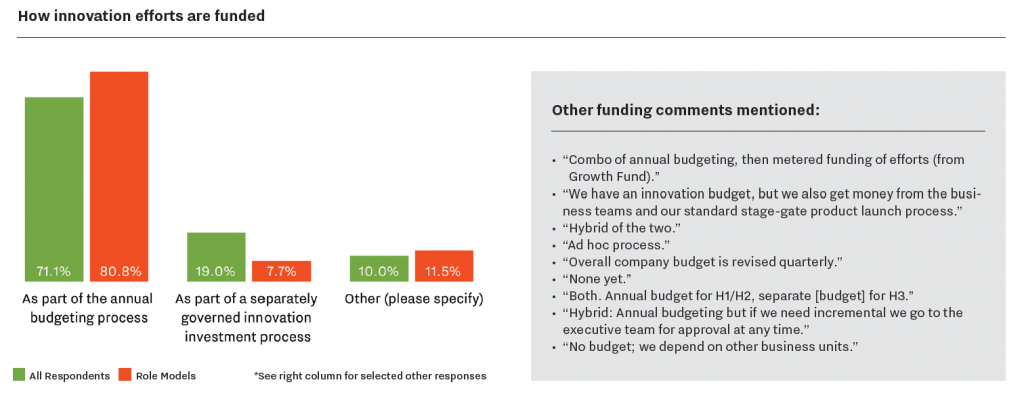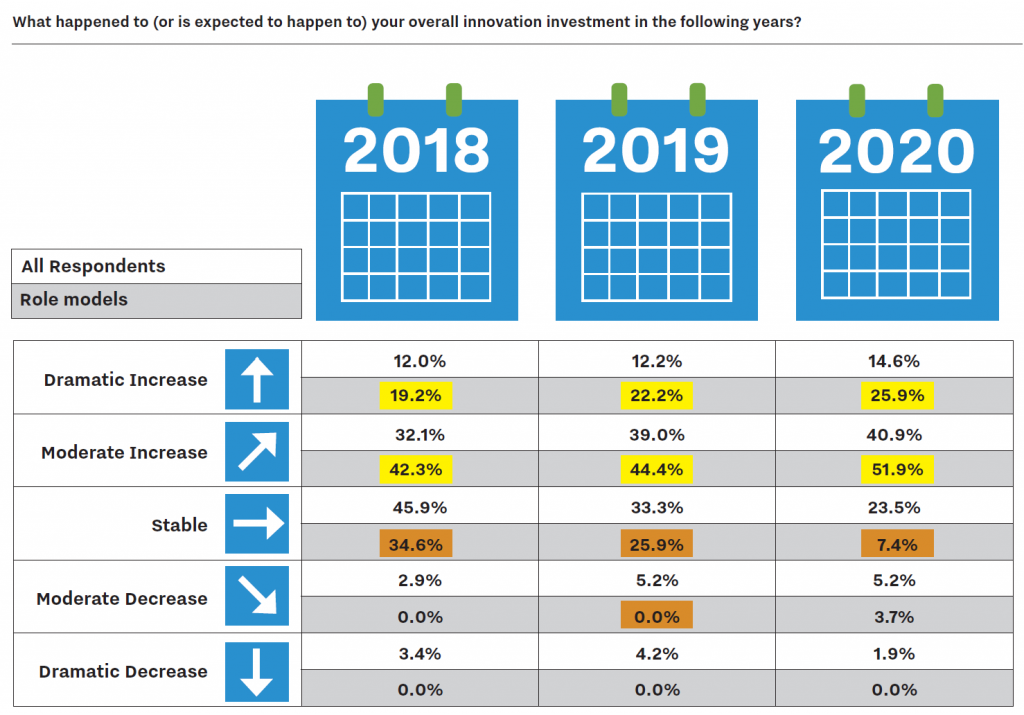Highlights (cont.)
Staffing Innovative Teams
In my analysis, I’m trying hard not to quote directly from the report. That doesn’t provide value as everyone reading this can just as easily read the report themselves. However, I simply can’t improve on this quote. So, I’m just going to leave this right here…
“When innovation groups want to move beyond running training programs and doing idea collection, into actually building and testing new offerings, they need more human resources.
– Benchmarking Innovation Impact 2020, KPMG LLP
Again, I’m not really sure how to improve on that. If you want to build better products. If you want to remain on the leading edge and stay ahead of your competitors. You have got to invest in Innovation.
Period.
Next topic.
Separating Transformational Innovation From the Core Business
KPMG noticed an interesting trend when it came to dividing up who does the work. They noticed that Core Business united were ideally suited for Incremental (Horizon 1) ideas, but according to the research, they often struggle more with the transformational ideas. Which makes sense when you think about it. If you want to extend a current product or service line, turn to the people who work in the space every day.
BUT, as noted above, to stay ahead you need to focus at least part of your Innovation budget on transformational ideas. And those ideas are often “beaten out of” (my words – not theirs) those core business teams.
So how do you come up with those ideas? Well, they can still be solicited from within your organization. They can still be spearheaded or overseen by an internal Innovation Champion, but maybe they need to be developed by someone other than a core business team. Whether that’s a Central Innovation Team that is sheltered from the corporate politics and normal ways of doing business, an external R&D team loosely affiliated with your company or an outside contractor – that all likely depends on the opportunity.
Funding Innovation
I was also interested to see where the money for the corporate investments in innovation comes from. Our recommendation has always been to have the operating costs for the Innovation teams to come directly from the Operating Budget. The reason is simple. You don’t want these people worried where their next paycheck will come from; otherwise, they’ll increasingly become short-sited and look for near-term wins to justify their existence (which isn’t always the best long-term strategy!). Only once an idea is proven valuable, do you fully fund the project. Fun fact, that’s what the “F” in REFINE stands for in our InnoSpecting Framework.
According to KPMG’s findings, over 71% of All Respondents had at least part of their annual investments coming from their annual budgeting. So, that handles the operating costs. And there were a few that allowed for more funding to be allocated after the idea has been proven. The image below shows where the funding comes from for All Respondents as compared to the Role Models.

And then following up on the comment earlier about funding expected to increase over the next year. The image below shows the respondents’ 2018 and 2019 budgets and compares them to what they are expected to see in 2020. Of note, the yellow highlights indicate a 5% (or more) increase and the orange highlights indicate a 5% (or more) decrease.
